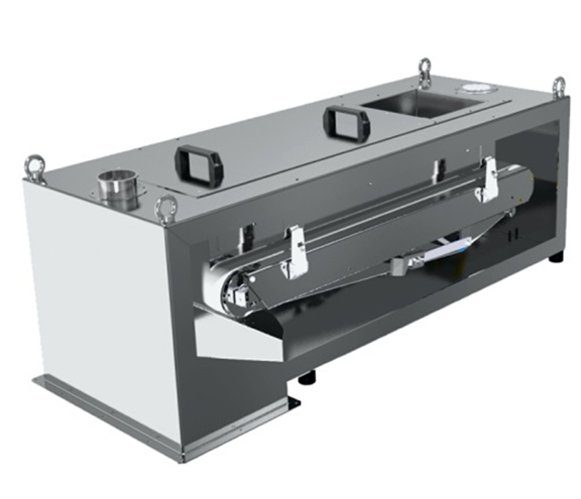Brabender Weigh Belt Feeders

An Introduction to Weigh Belt Feeders
Weigh belt feeders are an ideal material handling and metering system for many different types of product. Typically these are the bulk materials in a production process as the weigh belt feeder is best used for mid to high rate applications.
Materials that are typically fairly fee flowing such as granular powders, pellets or flakes perform well on this type of gravimetric feeder. Those products that are very free flowing are not well suited to belt feeders as they will tend to flush through rather than sitting nicely on top of the conveyor belt.
Main Elements of the Weigh Belt Feeder
The main parts of the weigh belt feeder are:
- The inlet feed area where the bulk material is fed onto the belt.
- The conveyor belt itself, which is generally quite short.
- The weighing system that measures the weight of product being fed via the belt.
- The motor and speed control mechanism the adjusts the conveyor's belt speed.
- The outlet area and belt scraping / cleaning mechanism that ensure the product flows correctly on to the downstream equipment.
How the Weigh Belt Feeder Works
By continuously measuring the weight of product over a known length of belt and the conveyor's speed, the weigh belt controller can work out the actual throughput of the feeder.
It will then adjust the speed of the conveyor to match the desired feedrate, making small increases and decreases in speed to keep to that setpoint rate.
With the right materials an accuracy of around ± ½% of the setpoint can be achieved.
Factors that effect accuracy include the ability to accurately tare the weight of the belt so that its weight is substituted from the feedrate calculation.
Materials should form a good even profile on the belt and ideally do not flood or clump, hence allowing for more consistent weighing accuracy.
Materials that do not coat the belt and build up over time as this causes a reduction in accuracy. This can generally be overcome with the correct outlet and belt scraper combination.
Benefits of Weigh Belt Feeders
As the weighed part of the system does not have to refill, as is the case with a loss-in-weight feeder, the weigh belt feeder is under gravimetric control for almost all of its operating cycle.
For feeders with high throughputs, the machine has a low headroom and smaller footprint than the equivalent loss-in-weight feeder. This is why they are often used on the higher volume materials.
The system can be supplied with both open sided and fully enclosed housings, so if the material is not dusty, an open-sided system allows operators to see that all is running correctly.
If the product requires gentle handling a belt conveyor is often a much better choice than a screw feeder, as there is very little mechanical action applied to the product as it flows through the system.
Areas to Consider with Weigh Belt Feeders
No feeding system is 100% perfect so there are some areas where you should consider if the weigh belt feeder is the correct device. These include:
- For very dusty and/or sticky materials, there may be build up around the weighing mechanism and other components that are situated around the conveyor belt.
- The weigh belt requires checking and replacing from time to time and a conveyor belt generally requires more maintenance over its lifecycle than a screw feeder.
- If the material is very light it may not form a sufficient bed depth to be weighed accurately.
There may be solutions to all of these points with your material and we can arrange product testing to ensure the correct selection of feeder if required.
Further information
Genesis Process Solutions aims to provide the most reliable and effective equipment in the industry for handling bulk materials. If you would like to know more about the Brabender range of weigh belt feeders or our other products or services, please use the details on our contact page.
